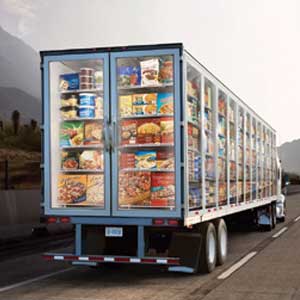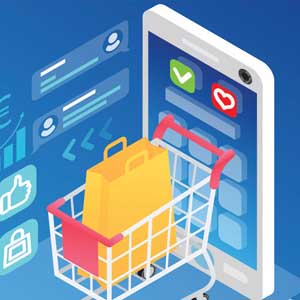THANK YOU FOR SUBSCRIBING

Joe Krkoska,
In history books of the future, today’s society will be portrayed as a period of unprecedented information availability that enabled productivity increases as significant as the global industrial revolution. There are simply so many pivot points reaching breakthrough, all at the same time, that this prediction almost seems too easy to miss. At a high level, the enablers are digitization of the operating landscape, and computing horsepower being put in the hands of the masses. Throw in a dose of robotics and 3D printing, and anyone paying attention gets goose bumps of excitement, including me. How can this information help us feed the world? After all, one can’t be nourished by a “data-byte.” I submit that there is a huge link between information and food sustainability; let’s explore the connection.
We all know that sensors are multiplying geometrically. You are already experiencing their presence: in your fitness wrist devices for your heart rate and motion, your phone with geo-location, the motion detection you find affordable for low cost home security and the list goes on. Individually powerful, interesting, and enabling, yet if one starts connecting and combining data streams, it is pretty easy to envision collateral benefits. Plus, miniaturization of those sensors along with scale means ever decreasing costs.
It is easy to imagine your doctor getting a report as a pre-read ahead of your annual physical. Data repositories are becoming democratized and easily accessible, and the growth of those data bases is increasing exponentially. Artificial intelligence (AI) and cognitive code are advancing at a blazing pace where the excitement is no longer about the creation of AI, but rather the examples that are appearing regularly on their success in everyday business. Concepts that used to be confined to movies and government top-secret projects are becoming part of our project lists. In fact, combinatorial innovation (a term I learned through Singularity University) is accelerating the value potential of each of the above individual capabilities. Think of what Waze has done for personal travel. Now imagine the cost of attempting such an outcome via a
I recently attended the Farm Progress Show in Decatur, Illinois, which is the agriculture industry’s largest outdoor trade show. Many people may not realize the efficiency and effectiveness breakthroughs that have taken place in agriculture over the last century. It is arguably a poster child of success as an industry.
Corn yields, for example, have increased 20x since the turn of the century when nearly half of employment was linked to agriculture. Today, less than two percent of the U.S. population is farming, yet those farmers are producing far more food than ever before. In walking around this farm show, it was apparent that the sky is the limit in terms of future productivity, and I have little doubt the industry will hit the target of doubling productivity by 2050. How? We simply must tap all of the capabilities above. Using sensor information, satellite imagery, drone imagery, analytics from yield and condition data, information repositories from product development research, and GPS are just a few tools that can enhance the work of the farmers who feed us, but equally important the food channel downstream of the farm.
Why does it matter and what does this mean to you? If we can double the effectiveness of agriculture, an industry that may be arguably one of today’s most efficient, imagine what we can do in other industries. Not only will our businesses have breakthroughs, but so will our cities and nations. The industrial revolution brought us unprecedented productivity. This revolution, the digital revolution, will bring us every bit of that and a bonus of equal or greater importance...resource effectiveness. In effect, information will replace the need for physical resources. If with the same inputs (diesel fuel for the tractor, fertilizer, seeds, crop protection products, etc.), a grower can double his/her output, how much better is that for our planet? Uber may have hit some speed bumps (pun intended), yet it has also enabled travel with lower fuel consumption overall by taking advantage of coincidental travel. The same will happen in cargo transportation, especially “last-mile” service. In fact it already is. AirBNB has increased asset utilization of home owners. Pessimists breathe easier, optimists celebrate - this revolution will bring with it a redefinition of resource consumption.
Information availability will spawn subsequent innovation and value capture. The technology put in place to pursue Opportunity A will have other applications, and the propagation and scale will enable the economics of the next project. For example, the bar code on your package that was originally implemented to automate check-out at your grocer can be used to link with data upstream to aid in problem resolution. It can also be used to enable consumers, or anyone along the channel, to provide feedback on quality or performance…or automate a loyalty program, or prevent counterfeit products ending up in your basket. One day, the loaf of bread in your pantry will have a “tag” that enables the person making the sandwich to know what acre the wheat was grown on, what seed variety, what crop protection program, what grain co-op stored the grain, what bakery, and what grocer bought/sold the bread. Each event will have a date and location stamp. Some of you may be wondering why anyone would want or need such information, but with food security and high consumer interest in mind, it is almost as certain a prediction as the impact of the digital revolution.
So there you have it...no disclaimers, no asterisk, no hedging. The change we implement and experience through channel digitization over the next decade will be game changing: for productivity and for sustainability as we continue to feed the world -and it is just the beginning.
Weekly Brief
I agree We use cookies on this website to enhance your user experience. By clicking any link on this page you are giving your consent for us to set cookies. More info
Read Also
Advancing Retail through E-Commerce, Cloud and Cyber security
From Code To Impact: Leading Enterprise Ai With Purpose
Reimagining Pension Services Through Responsible Innovation
Maritime: Beyond Systems, Beyond Seas
Human-Centered Innovation in the GenAI Era
The Art and Science of Selling
Responsible Data Leadership in an AI-Driven World
Driving Guest-Centric IT Innovation in Integrated Resorts






















